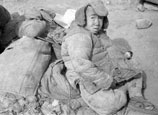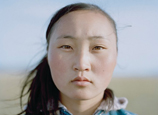
There's a saying that you should never judge a book by its cover, or a person by their outfit.
Yet, long before Chinese writer Mo Yan (real name Guan Moye) embarked on his journey to Stockholm Concert Hall, where on Monday he will accept the 2012 Nobel Prize in Literature, what he planned to wear was a national topic of discussion.
Casual or formal? Traditional or Western? A Mao suit or tailcoat?
It's fair to say that what Mo is about to wear has never been so scrutinized, as the country's masses wonder how a literature laureate will present himself on the world stage in Sweden.
On the massively popular micro-blogging forum Sina Weibo, fans have even Photoshopped various outfits onto Mo's image to determine his best look.
Designer Chen Bei, who created a wardrobe set for Mo and his family specifically for the Nobel award presentation, says the designs of the outfits speak for themselves.
"Clothes are actually a language. My designs are intended to speak for Mo," Chen tells China Daily in an exclusive interview.
In 1968, Japanese writer Yasunari Kawabata received his Nobel prize in a kimono. Will Mo also wear traditional Chinese garments?
Chen answers that the design is essentially a Western cut with Chinese characteristics.
"His appearance will tell the audience in Stockholm that Mo is a writer from China and also part of the international community," she says.
For example, one of the outfits Chen designed is a black woolen suit to go with a gray cotton shirt decorated with seals that are engraved with Mo Yan's name, in Chinese calligraphy.
"In Mo's case, I want the clothes to send the signal that he is sociable and easy-going. On top of which I added Chinese elements such as the cloth, pattern and collar," Chen says, adding that if the Chinese elements were too "far-fetched" it would be a sartorial disaster.
"Basically, first of all, I hope Mo looks great, then feels at ease, so he can let the clothes announce to the world who he is - a down-to-earth and intelligent Chinese writer.
"I respect him and he shares my views. I'm totally honored that Mo chose a Chinese designer," Chen says.
Mo told the national broadcaster CCTV on Wednesday, before boarding his flight for Stockholm, that he would dress according to his own preferences, bearing in mind Nobel etiquette.
"'When in Rome, do as Roman do'," he commented.
The seal design, for Chen, is a playful element and has previously appeared in her evening gown collections.
She is adept at combining contrasting textures like hemp, silk and lace, and she highlights this by adding seals of varied densities and layers. Mo also has the option of wearing a Sun Yat-sen collar.
"Low-key but gracious," Chen says of Mo's style.
Mo is not the first celebrity to be dressed in Chen's designs. Her star French clients include writer Marie Nimier, actress Marie Laforet and Madame de Villepin.
A design graduate of Tsinghua University, Chen owned a boutique in Paris where she honed her skills for many years before returning to China in 2007 with her brand "Beistyle".
The 35-year-old designer says the outfits for Mo's wife and daughter include casual dresses and evening gowns.
"They match Mo's outfits. I hope the designs will highlight the charm of Chinese women of different ages," she says.
Since Mo will attend both the Nobel Prize Award Ceremony at Stockholm Concert Hall and the Nobel Banquet at Stockholm City Hall on Monday, there are different dress codes to consider.
Mo's English-language translator and long-time friend Howard Goldblatt says he expect Mo to wear a white tie and tails at the Nobel Banquet, as is traditional.
But Mo's usual style is decidedly casual rather than fancy, even at events such as the London Book Fair, in April.
Some commentators say he should stick with this style and not care too much about representing Chinese writers in Sweden.
"I'm OK with either Chinese or Western dress for Mo Yan," says Xu Zechen, a Chinese writer.
"Once Mo steps on the stage to accept the prize, which honors his literary achievements, once he speaks in Chinese under the spotlight, it's enough and is the most effective way for him to represent the essence of Chinese culture," Xu says.
For Chen, dressing Mo has fulfilled her design dreams.
"It's what I've been thinking of for years: How Chinese present themselves on the global stage."















 'Devil' foreign instructors at Chinese bodyguard training camp
'Devil' foreign instructors at Chinese bodyguard training camp


![]()
